Hallacas are a popular dish in Latin America. Like tamales this dish is traditionally eaten during the holidays. There are many filling variations of dish.
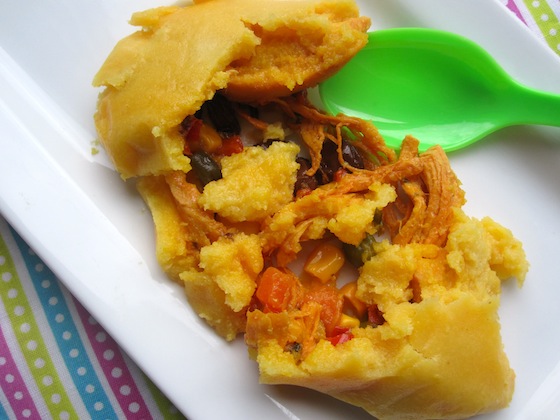
What are Hayacas or Hallacas?
They are a traditional dish from Venezuela as well as La Guajira department of Colombia. This delicious dish is usually made with precooked cornmeal (masarepa) filled with beef, pork or chicken, and vegetables, raisins and capers.
The meat is cooked with different seasonings, spices and herbs, such as, garlic, cumin, achiote, cilantro, among others, and wrapped with banana leaves or aluminum foil. They are similar to our traditional Colombian tamales, but smaller.
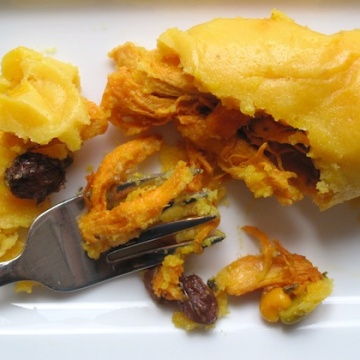
Hallacas Guajiras de Pollo Recipe (Chicken Hallacas)
Ingredients
- 3 chicken breasts bone in and skin on
- 1 large onion diced
- 4 garlic cloves
- 1 large red bell pepper diced
- 1 large green bell pepper diced
- 4 scallions chopped
- 4 tablespoons ground cumin
- 3 tablespoons of achiote
- Salt
- 2 cups water
- 1 cup peas fresh or frozen
- 1 cup carrots peeled and diced
- 1 cup green beans
- 2 tablespoons capers
- ¼ cup finely chopped red bell pepper
- 3 tablespoons of raisins
Instructions
- Place the chicken in a large pot. Add the onions, garlic, pepper, scallions, ground cumin, achiote, salt and water.
- Cook over medium heat until the chicken is very tender, about 1 hour. Let it cool and shred the chicken using your hands or a fork. Place in a saucepan.
- Add the peas, carrots, green beans, red bell pepper, capers, salt and raisins.
- To prepare the masa: Place the masarepa in a large bowl, add the water, salt, achiote oil and aliños. Mix well with a wooden spoon or your hands.
- To assemble the hallacas: Place 1 piece of the leaf on a work surface and place a second leaf on top, pointing in the opposite direction, like forming a cross.
- Spread about 5 tablespoons of masa in the center of the banana leaves or aluminum foil, at the point where they connect and form a cross.
- Add about 3 tablespoons of the filling in a line down the center of each portion of the masa. Fold the banana leaves up, one of the four sides at the time, so that the leaves enclose all of the filling, like you are making a package. Tie with butcheru's string. Continue the process until all the hallacas are wrapped and tied.
- Position a steamer basket inside a large pot (such as a stockpot or pasta pot). Add water and place the hallacas in the steamer basket, cover the steamer, and bring to a boil. Steam the hallacas until masa is completely cooked through and tender, about 45 minutes.
- Remove hallacas from the steamer and allow to cool briefly and serve with ají.
Notes
Nutrition
I didn't have banana leaves on hand, so I used aluminum foil to wrap my Chicken Hallacas.
How to Assemble Hallacas
Prepare the masa: Place the masarepa in a large bowl, add the water, salt, achiote oil and aliños. Mix well with a wooden spoon or your hands.
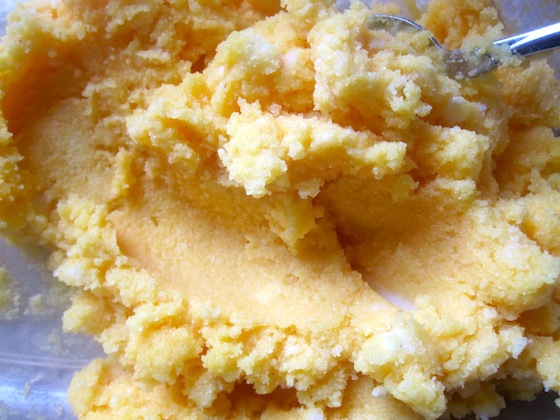
Place 1 piece of the leaf or foil on a work surface and place a second leaf on top, pointing in the opposite direction, like forming a cross.
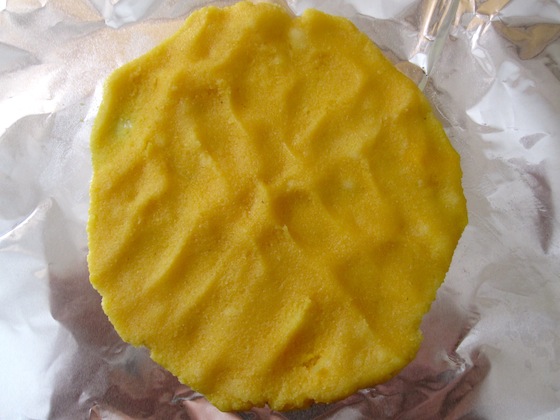
Spread about 5 tablespoons of masa in the center of the banana leaves or aluminum foil, at the point where they connect and form a cross. Add the filling in a line down the center of each portion of the masa.
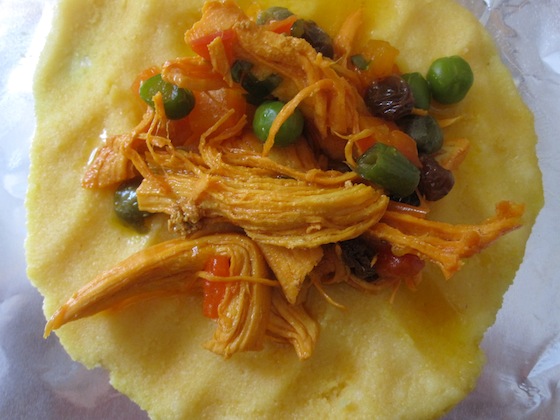
Fold the banana leaves up, one of the four sides at the time, so that the leaves enclose all of the filling, like you are making a package. Tie with butcher's string. Continue the process until all the hallacas are wrapped and tied.
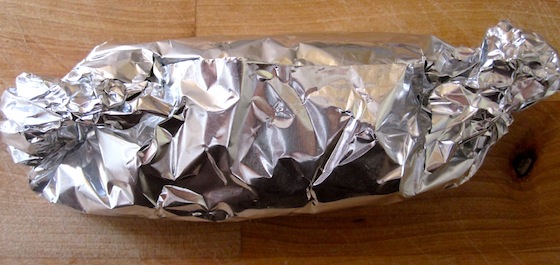
Position a steamer basket inside a large pot (such as a stockpot or pasta pot). Add water and place the hallacas in the steamer basket, cover the steamer, and bring to a boil. Steam the hallacas until masa is completely cooked through.
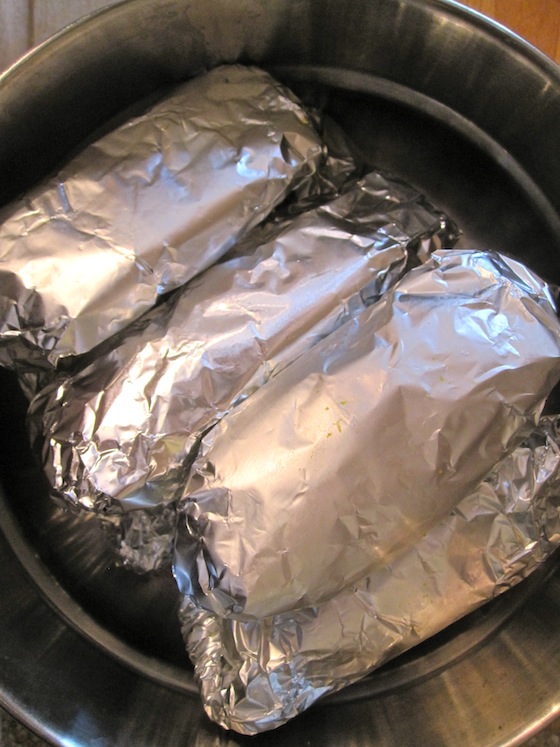
Remove hallacas from the steamer and allow to cool briefly and serve with ají.
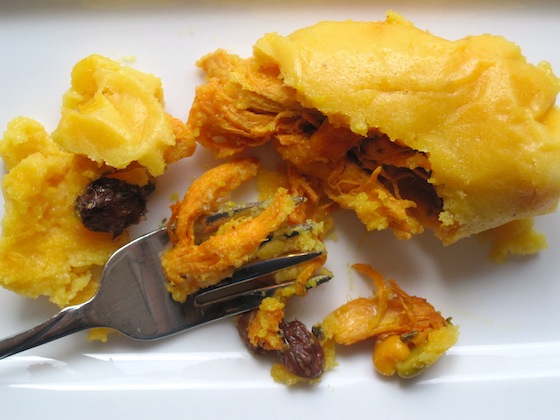


grace
i appreciate the unique method here--what fabulous results!
joanne
These sound like tamales but WAY easier! Can't wait to try them...I'm a sucker for anything stuffed in cornmeal.
Lyndsey - The Tiny Skillet
Erica, these are great I must make them soon. .. so secited that I have everything I need (I have plenty of masarepa) I'll just have to leave out the green peppers for my husband 🙂 Thanks!
Erika de Barranquilla Colombia
Para mí que no tengo habilidades para la cocina me pareció muy fácil.
Las voy a hacer para ver qué tal.
Y hacer algo diferente con mis propias manos y no tener q comprarlas.
Gracias
Belinda @zomppa
This is gorgeous - handy, flavorful with a kick.
Juliana
Erica, I never had this kind of dish...reminds me of the Mexican tamales. Looks great and sure make a great meal.
Hope you are having a nice week 🙂
Angie@Angiesrecipes
I would love this for the lunch! Looks so delicious and healthy with cornmeal wrap.
rebecca subbiah
wow these look amazing feeling so hungry now he he
Jeannie
Looks delicious! First time seeing this interesting dish...bet it tastes good too!
Chris
These look heavenly, Erica. I happen to be smoking two pork butts right now, one specifically for tamales (it is seasoned with a green chile rub) but maybe I should make hallacas instead.
Erica
Thank you everyone!
Fernando
Erica! Thanks so much for the recipes! Just love them.
One question... the ingredients list calls for red bell peppers twice. I can't find where you put the second batch? Do you not add the vegetables that are used to cook the chicken in the filling?
Thanks!
Fernando
Erica Dinho
Fernando,
The first batch is to cook the chicken and the second batch is for the step 3.
3.Add the peas, carrots, green beans, red bell pepper, capers, salt and raisins.
Natalia
Hi Erica!
I am having so much fun with all your recipes. I also have the same question that Fernando posted in the second part about the vegetables that were cooked with the chicken, do you just use the chicken or also the veggies and water that was cooked with the chicken? If not, can you use this as a stock for rice or something else?
Many Thanks!
Isis
I made these, absolutely delicious! Just as I remembered them in Barranquilla. Thank you so much! They were a hit!
Karen
Hi Erica,
How much salt do you put in the filling part and how much salt in the masa part? I'm always so hesitant when it comes to salt because I'm so afraid for it to come out too salty or just too bland. I know salt is always to taste but what is the rule of thumb? That would help me a great deal. Thank you for sharing your recipes!